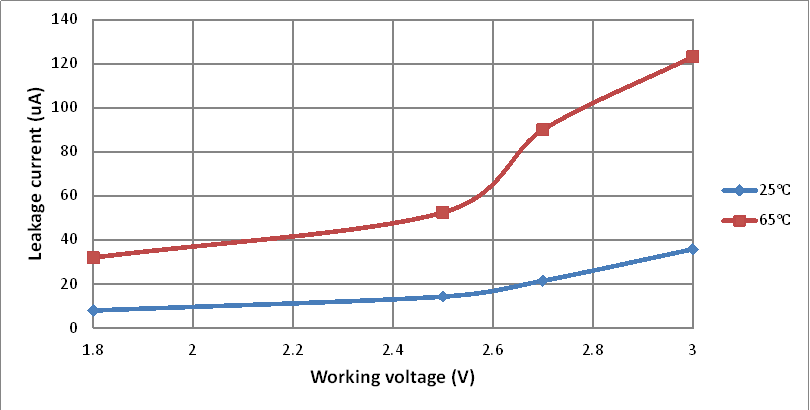SLVAF41A March 2021 – November 2021 TPS61094
5.2 Supercap Leakage Currrent
The supercap leakage current is an important part of performance in the smart meter, which is related to the operating life time. The leakage current depends on temperature, working voltage, capacitance and other parameters (similar to charge duration and short-term history) (reference 10).
For the leakage current, when the supercap working voltage decreases, the leakage current could also decrease, similar to Figure 5-1. For example, the supercap works at 1.8 V, the leakage is about 8 uA (18 % of data sheet spec) at 25 ℃.
The supercap leakage current is related to working temperature, too. The supercap leakage current at 65 ℃ is about 3~4 times as the 25 ℃, in the Figure 5-1.
 Figure 5-1 Supercap Leakage Current vs.
Voltage and Temperature
Figure 5-1 Supercap Leakage Current vs.
Voltage and TemperatureNote: the test data is based on WEC3R0156QG (3 V 15F) (reference 9).